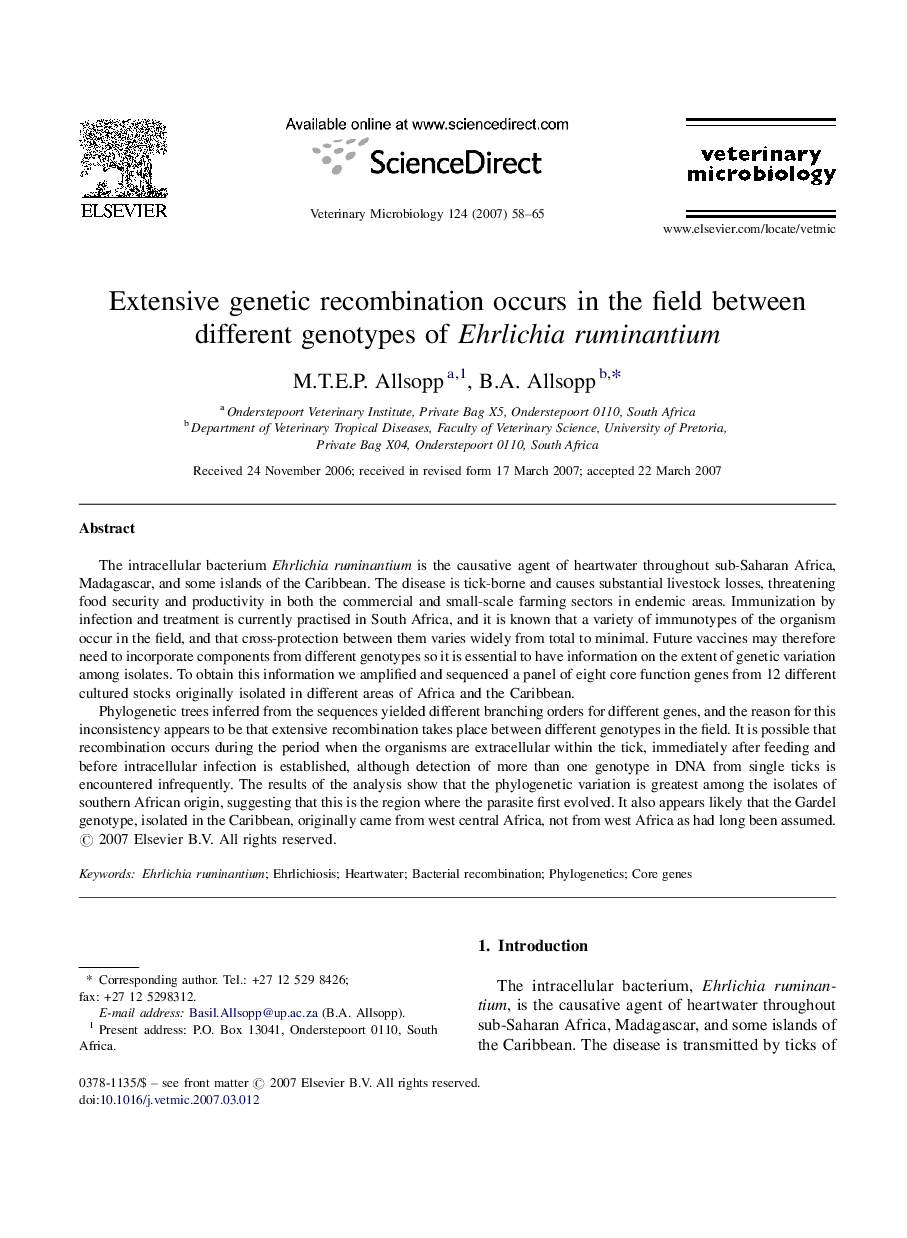| Article ID | Journal | Published Year | Pages | File Type |
|---|---|---|---|---|
| 2469220 | Veterinary Microbiology | 2007 | 8 Pages |
The intracellular bacterium Ehrlichia ruminantium is the causative agent of heartwater throughout sub-Saharan Africa, Madagascar, and some islands of the Caribbean. The disease is tick-borne and causes substantial livestock losses, threatening food security and productivity in both the commercial and small-scale farming sectors in endemic areas. Immunization by infection and treatment is currently practised in South Africa, and it is known that a variety of immunotypes of the organism occur in the field, and that cross-protection between them varies widely from total to minimal. Future vaccines may therefore need to incorporate components from different genotypes so it is essential to have information on the extent of genetic variation among isolates. To obtain this information we amplified and sequenced a panel of eight core function genes from 12 different cultured stocks originally isolated in different areas of Africa and the Caribbean.Phylogenetic trees inferred from the sequences yielded different branching orders for different genes, and the reason for this inconsistency appears to be that extensive recombination takes place between different genotypes in the field. It is possible that recombination occurs during the period when the organisms are extracellular within the tick, immediately after feeding and before intracellular infection is established, although detection of more than one genotype in DNA from single ticks is encountered infrequently. The results of the analysis show that the phylogenetic variation is greatest among the isolates of southern African origin, suggesting that this is the region where the parasite first evolved. It also appears likely that the Gardel genotype, isolated in the Caribbean, originally came from west central Africa, not from west Africa as had long been assumed.
